The dog tick, a parasite of mammals !
The tick is a small insect found throughout Europe. Ticks feed on the blood of the animals they attach themselves to, and will only make three meals in the course of their lives! They can settle in kennels or houses, and thus be a permanent source of contamination. Ticks carry a number of diseases, the best known of which is Lyme disease. So you need to be extra vigilant to make sure you and your pet don't fall victim. In this dossier, you will find a range of answers and natural products to help you combat this insect as effectively as possible.
|
I would like to |
|---|
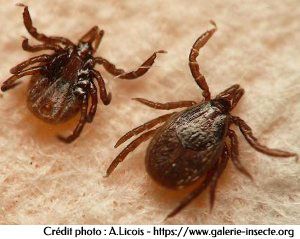
Latin name : Ixodes ricinus
Order : Acariens
Family : Ixolidae
Size : 4 to 12 mm
Location : any habitat
Period : all year round
What you need to know about ticks
The tick is a haematophagous mite, meaning it feeds on blood.
On an empty stomach they are around 4 mm long, but after a good blood meal they can grow to over 10 mm, making them the largest of the mites. Before arriving on the dog, the tick will parasitise numerous vertebrates such as lizards, birds and all wild or domestic mammals.
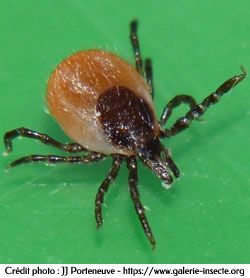
You or your dog can pick up this insect on a walk or simply by going into your garden. Beware: ticks can transmit highly dangerous diseases such as Lyme disease (transmitted by Ixodes ricinus), piroplasm, babesia and human spotted fever (southern France - transmitted by Rhipicephalus sanguineus).
No one is immune to ticks, since their habitats depend on the species. There are those that depend on humidity, found in forests, peri-forests or wooded areas, and those that are adapted to dry or even desert climates.
During the "foraging" phase, the tick waits for a host to attach itself to. Depending on whether ticks are exophilic or endophilic, you will find them on blades of grass, grasses, ferns, etc., or on the ground, on the twigs of nests and burrows or the crevices of caves. Adults can climb up to 1.5 m. However, contrary to what some people think, ticks do not climb trees!
Ticks can survive between -20°C (adult female) and +41°C. They also need a high level of humidity: 80-85%.
Tick life cycle
Ticks feed exclusively on the blood of the animals they attach themselves to, and will only make three meals in the course of their lives !
The life of a hard tick consists of three stages of development : larva, nymph and adult. At each stage, the tick takes a single blood meal, on a different host each time. Each stage is separated by a metamorphosis phase, which takes place in the soil or in a burrow.
The blood meal lasts from 2 to 15 days, depending on the species and stage (larva, nymph or adult female). The adult male does not feed. The most important blood meal is that of the adult female, as it precedes fertilisation and egg-laying; the female Ixodes ricinus can grow 200 times larger when gorged on blood. Ticks can live up to 3 years.
In order, here's how it happens :
Adult females lay eggs on the ground. Their eggs hatch, releasing larvae resembling miniature ticks.
The larvae climb to the top of plants and wait for a host on which they can attach themselves. The larvae attach themselves to the skin and take a single blood meal, then drop to the ground where they transform into nymphs.
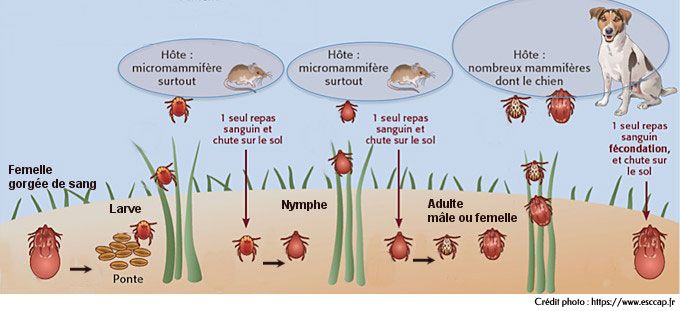 The nymphs in turn climb onto plants to parasitise a new host. Once gorged with blood, they drop to the ground and move on to the adult stage.
The nymphs in turn climb onto plants to parasitise a new host. Once gorged with blood, they drop to the ground and move on to the adult stage.
Finally, the adults (males and females) reproduce the same pattern: ambush at the top of a stem, a single blood meal on a new host and return to the ground. It is then that the females, fertilised by the males, lay their eggs.
To complete their life cycle, ticks need moderate humidity and warmth. They can wait for favourable weather conditions for several months, or even several years. As a result, tick infestations are seasonal, especially in northern Europe, where the risks are greater in spring and autumn. In the south, infestations are less seasonal.
How does the tick locate its host in order to feed ?
Ticks locate their hosts using a highly specialised recognition system, called chemoreceptors, located on the legs (and not in the antennae, as is often the case with insects). Ticks have no visual perception. They orient themselves towards their hosts, stimulated by their scent. Temperature sensitivity is not a factor, as ticks also bite cold-blooded animals (snakes, lizards, orvets, etc.).
Tick-borne diseases
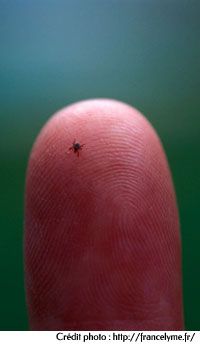
Ticks transmit around thirty pathogens, some of which are of interest to us, causing diseases in our dogs as well as in humans. Ticks are among the most important vectors of disease on the planet. Unlike mosquitoes, ticks are in contact for long periods (2 to 15 days) with a wide variety of hosts through which they spread pathogens. In this way, germs circulate from a reservoir population of vertebrate hosts to the ticks, which transmit them to other vertebrate hosts. The tick's exceptional longevity (up to 3 years) makes it both a good vector and an excellent reservoir.
The tick is a vector for 4 diseases
- Piroplasmosis or Babebiosis (all of France)
- Lyme disease or Borreliosis (all of France)
- Canine Ehrlichiosis (southern France)
- Canine hepatozoonosis (south-east France): a parasitic disease that is rare in France, contracted by ingesting a tick.
Tick-borne encephalitis mainly affects humans. Rare cases of infection have been reported in dogs, but most of these previous reports have proved to be erroneous. (Eastern France)
The great danger is piroplasmosis
Babésia canis is the pathogen of Babesiosis, or piroplasmosis, a potentially fatal disease.
The tick gets infected by taking blood from an infected animal and transmits the parasite and the disease by biting a healthy dog. Two ticks are vectors of this serious disease : Dermacentor reticulatus and Rhipicephalus sanguineus.
1 - Treat exposed parts of your body with a natural skin repellent such as ARIES lotion spray, our Penntybio anti-insect lotion or our anti-insect skin roller.
2 - Treat your clothes with our Penntybio insect repellent for textiles or our Aries insect repellent enriched with thyme essential oil.
3 - Protect yourself : we recommend wearing light-coloured clothing that covers the skin to make it easier to locate ticks, and wearing closed-toe shoes to prevent ticks from attaching themselves to the skin. When out and about, stay on the paths, taking care to avoid places likely to be inhabited by ticks. In gardens, you can limit their proliferation by cutting the grass short and removing dead leaves, which are a haven for larvae.
4 - Inspect your body thoroughly after your walk (especially the scalp in the case of children) and if you find any ticks, use the Tick Twister tick-pulling hook, then disinfect.
How can you protect your pets from ticks ?
1 - Treat your pets' baskets or kennels with our insecticide for all insects 4J diluted at 5% (500ml spray for 5 m2).
2 - You can protect your pets with various repellents : before going out in tall grass, protect your dog occasionally with our STOP fleas and ticks insect repellent foam, our STOP fleas and ticks insect repellent lotion, our insect repellent dry shampoo or our Alt'o Zinsect insect repellent spray or gel.
3 - Check your pet's coat regularly and thoroughly, especially after a walk outdoors, to make sure there are no ticks attached (beware of sensitive areas such as the eyelids, behind the ears, scalp, etc. You may need to do a tactile check, as larvae and nymphs are difficult to see). Avoid sleeping with your pets.
If you find a tick, don't pull on it, as the head will remain attached to the animal. We recommend removing it with our specially designed Tick Twister, then disinfecting. Do not pull violently or horizontally, but perpendicular to the skin, in line with the insect's jaws. Finally, if your pet is itching after extraction, be sure to disinfect first, then apply our soothing and deodorising STOP scratch lotion made from natural plant extracts.
Our other effective products against ticks
Here's what a tick looks like in motion
Frequently asked questions about ticks
Q: Can you tell me if your zero-chip cat product is effective against ticks ?
R: According to the manufacturer, this product is effective against a large number of parasites. Laboratory tests have shown it to be highly effective against fleas and ticks.
Q: I've just been given 2 rabbits that are quite big (3 to 4 kilos) and have never lived outdoors. I'd like to leave them in my garden and am looking for a non-harmful product to keep fleas and ticks away. I also have 3 children who play with these rabbits.
R: Take a flea repellent or a small dog collar. We have some on sale in our shop in the "Pet Protection" category.
Q: My kennel is infested with ticks. What do you recommend I use ? I have about forty dogs plus puppies. I have a reception area with a shop where I sell accessories and hygiene products.
R: For premises, pens or buildings, you can treat with our 4J insecticide. This will treat both ticks and other insects such as fleas. For dogs, we have various products: collars, pipettes, shampoos or sprays (ALT'O ZINSECT spray).
Q: Hello, I have a dog (expecting puppies) and two cats. My animals roam freely in our garden. I think we have a family of hedgehogs which attract the curiosity of our animals and which carry many parasites. My dog brings me ticks every day, even though she is treated with frontline combo. Our dog sometimes sleeps on our bed and I've already discovered two ticks on our bed. What can I do to treat this problem without endangering my dog's future puppies ?
R: Hedgehogs do have a thin coat and bare skin between the quills, which attracts fleas and ticks. Sometimes there are so many of them that they cause the death of a weakened or elderly hedgehog by sucking its blood. However, I thought that the Frontline combo was a preventive product that also cured ticks, with a minimum of one month's protection. This type of product is not a repellent but an insecticide, which means that the insects only die once they have bitten the animal. It is possible that the ticks you find are dead. The dog and cat collars on the market are designed to protect our pets from ticks and fleas. A word of advice: make sure your pets don't get into bedrooms. If they are carriers of fleas or ticks, they will inevitably bring them back into these rooms.
Q: We've ordered insecticide to treat certain parts of a garden to eradicate ticks. We're planning to treat the areas in the path of a dog and along a wooded area. Can you tell us the recommended dilution volume for this operation ?
R: For ticks, a 3% dilution of our 4J insecticide should be sufficient. Treatment should preferably be carried out on well-mown areas and in the evening (cool and shady).
Q: We're looking for a tick repellent for ourselves and our pets that's non-toxic because it can be applied daily in a tick-infested area! (1 to 4 ticks per week on us).
R: For pets, the flea repellents we sell are effective. In particular, you'll find our ALT'O ZINSECT insect repellent spray, a formula combining 3 well-known active ingredients (Eucalyptus citriodora, vegetable pyrethrum and geraniol), which are extremely effective in keeping biting insects at bay. For you, use our anti-insect body lotion instead. It's made from eucalyptus citriodora plus a vegetable oil for better application to the skin.
Q: What product is effective against ticks on a 14 kg dog? My animal has had piroplasmosis in the last few days (he's 9 years old) despite the essential oils used, which are supposed to be anti tick; frankly, I'm now very scared. Before every outing, I used to put quite a lot of it all over his coat (lavender-geranium-nem etc.....). What do you advise me to do ?
R: The product we think is most effective is our ALT'O ZINSECT insect repellent spray, given its composition, but we've never personally tested it on ticks.






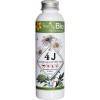
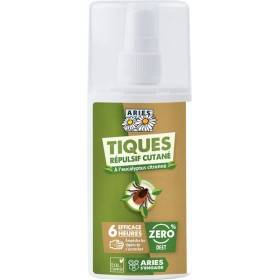
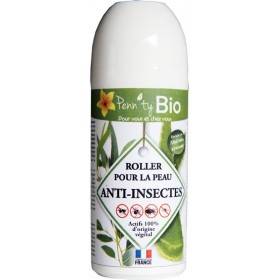
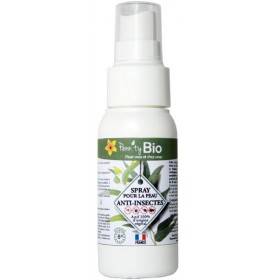
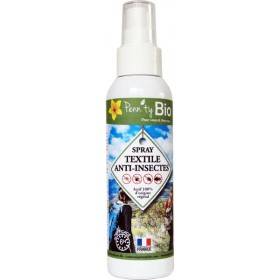
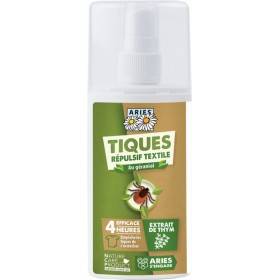
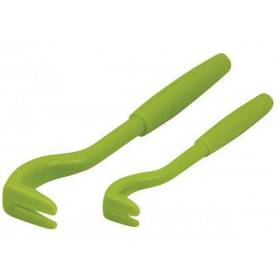
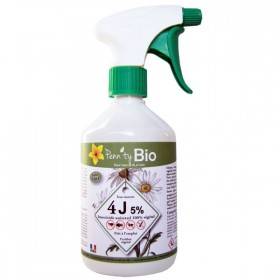

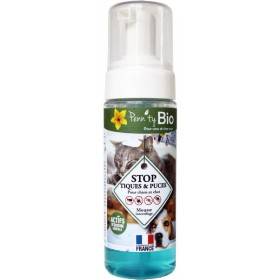
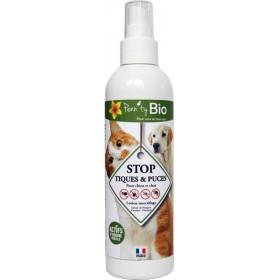
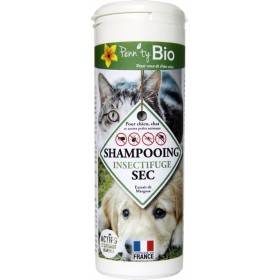
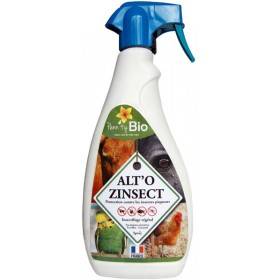
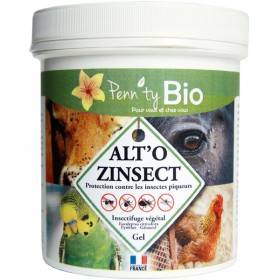
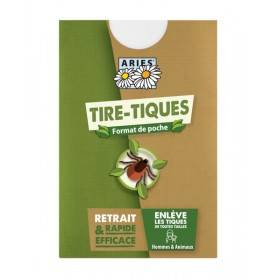
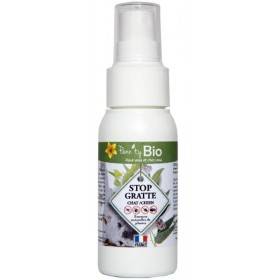
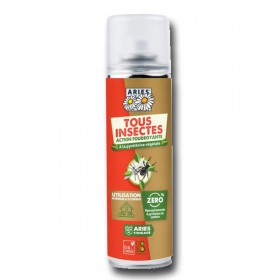
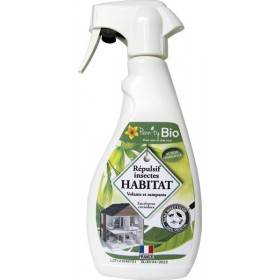
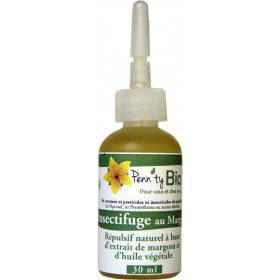
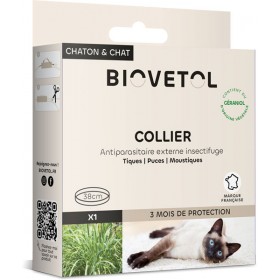
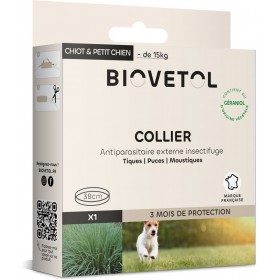
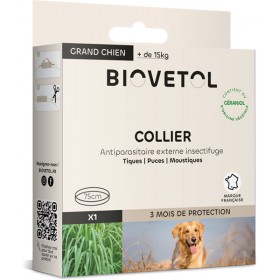
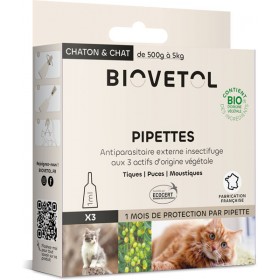
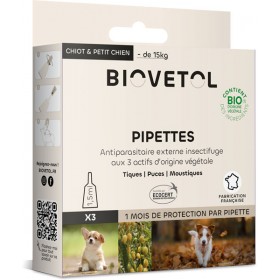
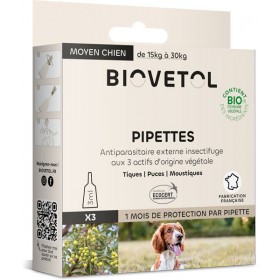
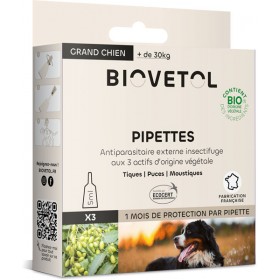
Customer reviews
Très bon produit, conforme à la description.
MICHELE P.
Excellentes prestations. Les produits sont formidables, l'emballage aussi. Les délais d'expédition compétitifs. Je recommande vivement Penn'Ty Bio à tous ceux que l'état de la Planète pour les générations futures inquiètent.
XX
Cela fait plusieurs fois que je commande chez Penn'Ty Bio et je suis toujours satisfaite de la qualité des produits et de la rapidité d'expédition. Je recommande ce site !
Ghyslaine
Ma commande s'est déroulée sans aucun problème avec une livraison rapide et soignée. La satisfaction est au rendez-vs ! Continuez ainsi ! Merci et cordialement !
Etoile 07
Site intéressant. Je l'ai découvert, en fait. Produits ménager éco-responsable. Bon pour la maison et non agressifs. Merci.
Mydiadao
Produit conforme aux attentes.<br /> <br /> <br /> <br />
Alain
Livraison rapide. Produits bien emballés.
Bruno
Rapide, sérieux et qualité, produit correspondant à la description, très contente, je recommande votre site et vos produits.
Corinne
J'ai bien reçu le diffuseur et j'en suis très content.
Paul
produit parfait.
René
Merci beaucoup pour votre rapidité et votre professionnalisme.
Julie
Félicitations pour la qualité de votre site & la valeur de ses informations ! Continuez ainsi ! On a besoin de vous !
Ronald
Commande reçue rapidement, frais de port raisonnables pour expédition à l'étranger et les produits sélectionnés au top! Merci!
Cédric Adolphe B.
Je vous remercie de votre professionnalisme et de votre réactivité.C'est loin d'être toujours le cas lorsque l'on commande sur internet.
Gaëlle
Livraison rapide et bien emballé. Petit message manuscrit qui fait plaisir :)
xx
j'ai reçu mon colis aujourd'hui, merci c'est très rapide et sérieux.
Nathalie
Merci pour l'expédition de la pièce de verrerie qui a été recu cette fois sans casse. Meilleures salutations et à très bientôt sur votre site pour un prochain achat .
Louane
Merci d'être à l'écoute pour notre terre et vos clients. Encore une fois je suis très satisfaite de ma commande. Et mes compagnons à 4 pattes sont ravis de se protéger en bio. Merci pour votre attention manuscrite en fin du bon de commande..
Raymonde julie L.
sérieux
XX
livraison rapide, produits bien enveloppés avec juste un petit bémol : pour l'imperméabilisant dont le couvercle n'était pas bien fermé.
Alain
Un grand merci pour votre professionnalisme et la qualité de vos produits. Longue vie à votre site.
XX
Très satisfaite du produit.Rapidité et emballage très soigné.SERIEUX.
MARLENE
en comparaison d'autres produits employés précédemment, je trouve les vôtres beaucoup plus efficaces et cela sur le court terme ,disparitions des odeurs en combinant les produits suivant vos conseils .
XX
Je suis une amie de vos parents et suis toujours très satisfaite de tous vos produits. Ne changez rien et bonne continuation.
Marité D.
Grande gentillesse et efficacité : que demander de plus ? Merci !
Chantal M.
Jamais déçue : les produits correspondent à la description et sont livrés rapidement.
Mireille
j'ai bien reçu la commande et je vous remercie pour votre efficacité.
Margot
très bons produits et service commercial très performant, continuez sur cette voie, merci.
Annick
Bons produits. Fonctionnent très bien.
xx
Livraison rapide , produits de qualité, je recommande Penn'Ty Bio.
XX
Très bon site avec de très bons produits et un soin particulier apporté à la préparation de chaque commande... De plus, Sophie et Quentin prennent la peine d'écrire un petit mot de remerciement avec la commande envoyée....c'est peu commun mais très sympa....:-)
STEPHANE P.
Très bonne adresse où l'on trouve des alternative aux produits chimiques notamment contre les insectes. Le service client est également de très bons conseils.
ck
Comme d'habitude, envoi soigné, produits performants, Merci.
XX
Pour ma part j'ai été satisfaite de la réalisation de ma commande et du délai de livraison. Je recommande votre société.
Nelly
Cliente depuis plusieurs années, j'apprécie toujours ce site. Meilleures salutations.
France
Je vous remercie beaucoup de m’avoir fait profiter d’un acheminement par Colissimo alors que rien ne vous y obligeait, sauf votre conscience professionnelle, chose rare de nos jours et qu’il ne faut jamais manquer de souligner.
Cécile
Vos explications par email ont été très claires et votre diligence dans le traitement de ma commande et de mes demandes est très appréciée.
Henri
Marie-Noëlle
Service très réactif, emballage soigné , livraison rapide. <br /> Rien à redire . Continuez !!
Sophie
Livraison très rapide et produits intacts à l'arrivée grâce à un emballage impeccable.
Etta
Colis très bien protégé service rapide. Merci. Site très sérieux .
Elios R.
Efficacité redoutable. enchanté.
Robert
Bonjour, j’apprécie depuis longtemps votre travail : la qualité de vos informations et des produits que vous vendez.
Frederic
Très réactifs entre la commande et la livraison. Je suis toujours satisfaite de mes commandes soigneusement emballées !
France L B
Bons produits conformes à mes attentes et livraison au top. Je recommande vivement.
Chantal P.
Colis parfaitement emballé et produits conformes. 1 des produits était très fragile et est arrivé en excellent état, merci :o) Pourquoi achetez à l'étranger alors qu'on a de si belle s entreprises en France? Tarifs identiques ou moins chers que chez Amazon ;o)
Stéphane C.
Très bien !
XX
Bon produit, efficace et laisse une odeur plutôt agréable. Expédition rapide, emballé avec soins. Je recommande
Mary
Bonjour. Je souhaite vous remercier pour votre rapidité. Le colis est arrivé en bon état . Les huiles que nous avons commandées embaument la maison. Ce diffuseur est génial.
Christian
ANNE
J'ai passé ma première commande, chez vous il y a trois jours à peine et ce matin, je reçois mon colis.
Sophie
Très contente des produits de qualités et une commande reçu très rapidement. Merci
PATRICIA A.
merci pour votre professionnalisme. Merci pour les produits envoyés dans de bons délais. Merci pour la qualité de vos produits
Marcelle
Très contente de vos produits.
nathalie G.
Personne disponible, de très bon conseil suite à des punaises de lits dans mon habitation, les produits sont efficaces car depuis aucune punaises et la vie à repris son cours ... merci pour tout
Nathalie
Parfait !
Mireille
Très satisfaite, merci.
Christine
Merci et bravo pour la qualité des produits et du service toujours aussi efficace et performant.
Annick P.
Merci beaucoup pour la rapidité avec laquelle vous m'avez fait parvenir le diffuseur.
Bichette
Parfait.
Philippe
Je confirme efficacité sur la préparation et expédition du matériel. un grand merci
Jeremy
Prix intéressants. Expédition super rapide à bon prix. Et tout ça de façon agréable !
Alexis M.
Client depuis plus de 10ans. Toujours satisfait du matériel propose. Boutique sérieuse prix compétitifs livraisons et suivis rapide.
XX
Client depuis des années Produits de qualités et surtout qualité de service.
XX
Très bons produits efficaces.
XX
très satisfaite de ma commande site vraiment sérieux livraison soignée et rapide ,les articles sont conformes a la description,je suis enchantée et recommande vivement
Marie Viviane C.
Produits d'excellente qualité, arrivés rapidement, et conformes à leurs descriptions.
Michelle G.
Très bons produits, service rapide et de qualité, rapport qualité/prix intéressant. Je recommande vivement.
Alain
Merci pour le geste commercial, et aussi pour les nombreux conseils et l'excellent service client.
Tristan L
Toujours impeccable, les produits, les services. Depuis que j'ai changé de facteur, plus de soucis. (Ça n'est arrivé qu'une fois!!!)
XX
Je ne connais pas encore tous les produits mais contente de ce que j'ai commandé. En revanche un peu cher quandmême ce qui me limite.
xxx
Tout est parfait : la qualité des produits, la rapidité d'expédition, la qualité du colis. Je suis enchantée et resterai fidèle à ce site.
Dominique
colis reçu ce jour, merci pour le flacon offert
Andrée
Service rapide et efficace. Et Sympathique ! toujours un petit mot, ça fait la différence. Et c'est français en plus :). Je recommande.
XX
Livraison en temps record à l'adresse indiquée en France puis départ dans l'océan indien. Reception des produits en quinze jours à l'autre bout du monde : ravie. Je vous laisserai les avis produits une fois utilisés. Le site est très bien fait et très agréable à utiliser. Le petit mot à la main dans le colis humanise la transaction, je l'ai apprécié. Je pense que vos produits sont très utiles et je vous souhaite une belle réussite et sur la durée.
Sylvie D.
Penn'Ty Bio wonderfully served our family in Switzerland so that we could try the range of Totemsavon products, which are such caring, loving, and consciously manifested creations :)<br /> <br /> By allowing a shipment to Switzerland and elsewhere, I am sure so many more people would be able to benefit from the beautifully selected product portfolio in Penn'Ty Bio and all, together, make a conscious leap by using and demanding a way more purer approach to anything we interact with.<br /> <br /> Thank you so so much Penn'Ty Bio!<br /> <br /> In 8 Love We Heart Trust<br /> <br /> Miguel Ángel
Miguel Ángel
Content des produits achetés, reçu rapidement et bien emballé. Merci.
XX
Bravo et merci : produits de qualité et service TOP... continuez !...
XX
Super !
Yann
Toujours aussi "réactif" et efficace<br /> Bravo et merci pour votre professionnalisme.
Annick P.
Avec les trois lettres BIO dans votre nom, je ne m'attendais pas à découvrir des billes de polystyrène comme matériaux de rembourrage. Il y a certainement plus écolo !
Michel D.
Rapide, sérieux, très bien emballé, un sans faute.Merci.
L.H.
Merci pour tout le soin que vous mettez pour une livraison individualisée, chaleureuse et aussi peu impactante que possible sur l'environnement !
Sandra
Je voulais vous remercier +++ pour votre gentillesse et surtout... votre compétence. C'est vraiment de l'excellent travail... j'ai été bluffée :-)<br /> Renseignement téléphonique 10/5 - produit 10/5... encore merci
Maryse
Cliente fidèle depuis plusieurs années, je ne peut que recommander ce site. Tout est parfait. Tous les produits au top, rapidité d’envoi, gentillesse, allez y les yeux fermés vous ne serez jamais déçus.
Marité 06
Livraison ultra rapide, bien emballée. Produits au top. Parfait !
Caty
Livraison rapide et soignée. J'utilise les produits bio qui sont de très bonnes qualités. Un savon m'a été envoyée par erreur à la place de celui commandé et il m'a été remplacé très rapidement. Bravo pour leur réactivité. Je recommande fortement ce site.
Liliane
Excellent site. Très à l'écoute. Livraison rapide. Problème avec un piège à guêpes un autre m'a été livré très rapidement. Chapeau et très agréable de tomber sur des gens compétents.<br /> Encore merci.
XX
merci pour le suivi de ma commande et les mails par lesquels vous m'avez tenu informée.
Zoé
Livraison rapide et fiable, dès que le chèque a été reçu. Produits de bonne qualité.
Chantal H.
BIEN,CONTINUEZ COMME çà.
XX
Livraison express. Colis toujours aussi bien préparé (cales, flocons, adhésif sur les bouchons qui risquent de couler). Bravo pour votre professionnalisme.
Isabelle
fiable et de bonne qualité pour les services et les produits :)
XX
Produit performant et raisonnable au niveau prix. Je recommande
XX
Diffuseurs qui sortent vraiment de l'ordinaire, un envoi parfait - merci BCP
Anthony
Cliente depuis plusieurs années. Super service, réactif, cordial. Les produits sont excellents.
Christine
Bonjour <br /> C'était ma première commande sur votre site et j'en suis très satisfaite <br /> Je vous remercie pour votre professionnalisme (site, prise de commande, livraison) ainsi que pour le petit mot qui rend le tout humain. Très belle journée.
CG
Site très sérieux et personnel vraiment agréable. Envoi rapide. C est parfait !
Ingrid
Pas encore essayé le produit, mais le site est très sérieux. Livraison dans un temps éclair, même si je suis en Belgique. Emballage soigné. On peut faire confiance.
Roberta
Tout est parfait à chaque fois. L'attention portée va même jusqu'au petit message, c'est agréable. Fidèle aux produits et au site plus que jamais.
xx
anne-marie B.
Livraison efficace et bon contact oral avec mon interlocutrice.
Maussane
Bonjour Sophie & QUENTIN, Merci pour votre petit mot. . . . Ça fait chaud au Cœur de voir qu'il y a encore des Gens Comme VOUS sur cette planète ! Le monde devient de plus en FOU ! ! ! Cordialement.
Dominique T.
Site pratique, compétent, prix corrects. Un envoi très rapide, et je dirai "parfait".
Greg
j'ai reçu mon colis aujourd'hui, merci c'est très rapide et sérieux.
Clara
Parfait comme site, commandes faciles à faire et livraison rapide !
Cindy
service très efficace à chaque fois que j'ai commandé. aucune mauvaise surprise sur la livraison. je recommande
Agnès
Site très pratique. Commande aisée. Suivi régulier. Délai de livraison respecté. Colis très soigné. Tout est parfait.
Nicole
Produits facile à utiliser, efficaces et finalement pas plus onéreux, à l'usage que des produits issus de la pétrochimie. Service livraison impeccable. Je recommande +++<br />
XX
livraison impeccable, produit bien emballé et correspondant au descriptif, excepté pour la surface de diffusion, ma salle principale doit faire 25m2 maximum et ça ne se diffuse pas au-delà.
Pascale
Merci pour votre efficacité et votre gentillesse, commande, livraison, petit mot agréable, tout était parfait !
Sylvie
Commande facile, livraison impeccable et produits fiables. Merci.
Isabelle
Quel dommage pour le produit manquant, je vous remercie pour le remboursement.
Didier
C'est extrêmement délicat de votre part d'avoir fait diligence. Je ne manquerai pas de recommander votre site et de souligner votre gentillesse. Encore merci
Michel
Commande bien reçue . Je suis très satisfaite Merci pour votre sérieux
LILIANE
Je me permets de vous écrire un petit mot afin de vous dire que votre site est très bien fait.
Tom
Satisfaction totale. Entreprise au top. J'ai téléphoné le lundi matin, malgré que les contacts téléphonique ne sont que l'après midi, une personne très charmante m'a rappelé presque aussitôt pour mes donner les infos que je souhaitais connaître sur ma commande. Bravo. nous sommes mercredi et ma commande est arrivée. Encore bravo continuez comme ça.
Jacques M.
Site sérieux. Bons produits.
Magali
Excellent site rapide et efficace. Descriptif intéressant.
XX
Bon service et bon produits
Odile R
Livraison rapide et très bien emballé et protégé. Très bonne efficacité. <br /> <br />
XX
Commande reçue rapidement, très bien
XX
Super, envoi rapide,bien protégé et petit cadeau !
xx
Je trouve l'essentiel sur le site à des prix défiants toute concurrence. Continuez comme cela.
XX
Bons produits, emballage impeccable, livraison super rapide ! Parfait !
XX
Je voulais non pas faire une réclamation; mais vous féliciter pour vos produits que j' ai bien reçue, et également pour la rapidité de votre envoi ce qui est plutôt rare dans d'autre site.
Jérôme
Très bien...merci.
Olivier
Vos produits sont de bonnes qualités et les produits très bien emballés
Dominique
Merci pour votre sérieux et la réexpédition ultra rapide d'un achat non conforme (dont vous n'étiez pas responsable).
Marc
Livraison très rapide. Notice livrée avec les produits ainsi qu un petit mot très agréable. Produits très efficaces, avec de l huile de coude, on en vient à bout. Le produit concentré nous a permis de tout éliminer. Par précaution, nous avons tout de même utiliser le spray. Dans une pièce, nous avons utilisé le fumigène. Pour les animaux, la mousse semble efficace. Dans quelques jours nous ferons le shampooing et plus tard les pipettes. Mais franchement après avoir utilisé d autres marques qui ne fonctionnaient pas, nous sommes ravies et nous recommandons ces produits. Merci
Virginie C.
accueil téléphonique personnalisé réactif compétent et bienveillant, livraison rapide et conforme. BRAVO merci pour la qualité de votre travail
Annick
Commande et livraison rapides!<br /> Rien à dire, c'est parfait !
Christine
Ravie de découvrir un site qui présente des produits de qualité avec une vraie démarche éco responsable à des tarifs intéressants.
XX
Les produits achetés sont excellents. Ils répondent parfaitement à ce que je cherchais. Bravo pour votre site
Michel
Bravo ! je vous félicite pour votre efficacité et ne manquerai pas de vous conseiller.
Nicolas
Merci pour votre envoi : rapidité, ponctualité, information de suivi du colis etc. Vraiment du bon boulot.
E.G
2 commandes à mon actif et jamais déçue. Vous avez gagné une cliente régulière :) Merci pour votre sérieux et le contenu bien rempli de votre site ! c'est super d'avoir une description hyper détaillée de chaque produit.
Magali
Site de produits naturels et bio très bien fait, agréable et fiable. beaucoup de produits de qualité.
Anne Marie R.
Livraison très rapide; Tout était parfaitement emballé. Je referai appel à vous.
JV39
Totalement satisfait. Les produits sont super efficaces et tout est très bien suivis. Je recommande vivement ce site.
Stéphane N.
Très satisfait du site livraison rapide.<br />
Michel
J'ai toujours été satisfaite de mes commandes chez Penn'ty bio. Rapide efficace. Surtout les caractéristiques des produits est claire et complète. et le site contient beaucoup d'informations sur les différentes gammes. Merci pour votre travail et votre activité.
XX
je viens de réceptionner ma commande. Tout est ok. Merci pour ces produits respectant l'environnement et l'être vivant.
Anatole
Bonjour Sophie et Quentin,<br /> Je viens de recevoir ma commande et je tenais à vous remercier pour la rapidité de l'envoi, votre gentil petit mot et le petit présent qui sent bon et donne envie. Bel été à vous deux également
Geneviève
Juste un petit mot pour vous remercier de votre disponibilité et pour vous dire également que je suis très satisfaite des produits que j'ai acheté, ils sont vraiment efficaces.
Barb.
Très satisfaite des délais, les produits sont bien emballés et le petit mot sympathique est fort agréable!<br />
Sylvana
Louise
J'ai reçu le colis, merci beaucoup de votre promptitude et bonne continuation.
Louise
I had a marvelous experience with ordering and everything ! Thank you for a great service.
XX
J'adore ce site qui fait un vrai travail de sélection de produits que je ne trouve pas ailleurs et sur une large gamme. Je recommande.
Veronique G.
Une grande compétence, Monsieur Dufil est très professionnel et sait soigner ses clients. Quand à la gamme de produits proposés, elle est parfaite et complète.
Alain A.
Alex
MERCI au personnel à l’emballage !!! Ma dernière commande était super bien emballée. Elle a résisté aux (épouvantables) chocs subis pendant le transport. Merci
Veronique
Je parlerais de vous a mes amies car vos produits sont vraiment excellents. Bien a vous et tous mes remerciements.
Patricia
Bonjour, je voulais vous féliciter pour la clarté de votre site, la rapidité de la livraison et la qualité de l'emballage.
catherine R.
Service de qualité, suivi rigoureux et rapidité au rendez-vous. Mon colis est arrivé vite même avec un paiement par chèque. Les produits sont très fidèles à leur description et pour un coût serré. A recommander fortement.
Vincent
Rapidité de livraison. Très bon produits. Merci
Mélina
Commande tout à fait conforme et emballée avec grand soin.
Sarah
Bon produit. Merci Penn'Ty Bio. Un seul passage dilué à 5% et les puces ont disparus. Il en restait deux ou trois qui ont dû se perchés pendant le traitement mais sinon c'est performant.
Axel
Je tenais à vous remercier pour votre service de qualité, une livraison toujours rapide, des colis bien emballés - qui évitent fuites et casse, ainsi que pour le petit mot personnalisé joint à chaque commande, c'est toujours très agréable.
Isabelle G
Super, livraison rapide, suivi très rigoureux, site de confiance, très sérieux à recommander... Merci pour tout.
Bernard
J'ai bien reçu le colis sans aucun problème. Merci pour la rapidité et le sens du service.
Nicolas
Beaucoup de soins dans la commande reçue. Je recommande!
XX
Je suis ravi de trouver les produits de qualité et d ‘efficacité incomparable.
Denitza K.
Livraison rapide et produit conforme à la description. J'approuve à 100% le principe du recyclage des éléments d'expédition. Un produit fabriqué une fois soit avoir plusieurs vie. Bravo pour cette initiative.
Christophe
Site clair, envoi rapide, marchandises bien emballées, et un petit mot charmant!
SM
Très satisfaite.
Louise
super contente, j'y trouve facilement les produits dont j'ai besoin et le service est impeccable et gentil !
Hélène S.
comme toujours excellente réactivité, livraison très rapide et qualité produits TOP. Merci pour votre compétence.
Annick P.
Produits conformes aux descriptifs. Délai de livraison respecté. Satisfaite du nébuliseur qui est superbe.
VR
Un grand merci pour cette commande envoyée très rapidement. Je recommanderais votre site
Elise
Très satisfaite de ma commande. Emballage soigné et envoi rapide. Merci beaucoup pour votre professionnalisme !
Sophie
2 commandes à mon actif et jamais déçue. Vous avez gagné une cliente régulière :) Merci pour votre sérieux et le contenu bien rempli de votre site ! c'est super d'avoir une description hyper détaillée de chaque produit.
clara
Merci pour votre geste que j’apprécie.<br /> Cela fait plaisir de retrouver l’esprit commerçant de proximité chez un vendeur en ligne. Je surveillerai attentivement cette nouvelle livraison.
Philippe
Marie Aline Roux
C’est la première fois que je commande sur ce site et pas déçue livraison rapide de ce produit que l’on ne trouve pas partout. Je recommande
Patrick
Après la découverte des punaises de lit dans 2 chambres de notre vieille maison, j'ai trouvé votre site. le dossier m'a été très utile et je suis très contente d'avoir trouvé des produits moins toxiques que ce que proposent les autres sites de vente.<br /> Je vous remercie d'avoir répondu à mon mail car c'est un peu l'affolement quand on découvre chez soi des punaises de lit.
Françoise S.
En cette période d'avant Noël, je craignais que me colis arriverais en retard. 48h après mon achat, c'était dans la boîte aux lettres. Du coup, je suis large pour mettre mon achat sous le sapin. Merci à vous
Art4
Franchement, Penn'ty bio, c'est top ♥<br /> Quentin est super réactif, de très bons conseils. Encore merci de votre efficacité.
Hélios ☼♥
Une utilisation de vos produits a suffit pour nous débarrasser des poissons d'argent. Merci.
Matthieu
Tout à fait satisfait de la qualité de la livraison ainsi que du produit commandé.
Régis
Très contente d'avoir découvert ce site internet ! Du conseil jusqu'à l'achat c'est super. J'étais très embêtée après l'apparition de petit insecte chez nous (des anthrenes) et c'est le seule site internet e-boutique qui a pu nous renseigner dessus et enfin indiquer les produits pour les éradiquer sans pour autant nuire à notre santé (mais en respectant les conseils d'utilisation bien sûr). J'ai reçu ma commande rapidement, et avec surprise un petit mot de remerciement personnalisé avec mon nom dessus. Des détails qui au finale font la différence. Un service de qualité rien à dire. Merci !
XX
Fiable, et très bons produits , Service après vente efficace et sympathique.
Vilma V.
Un grand merci pour la qualité et la rapidité de votre réponse.
Tony
Excellent!! Commande passée le lundi, reçue le mercredi!!! Les produits sont en plus de super qualité !
MADELINE
J'adore. Très grande diversité de produits, les explications sont simples et complètes.Quand aux colis, ils sont extrèmement bien protéger. Un grand merci.
Nadine
Envoi très rapide, personnalisé et soigné. Merci
XX
J'ai été TRES bien conseillée lors du contact. Produit naturel donc c'est parfait.
Lilla
Envoi très rapide et bravo pour votre site de reconnaissance des insectes nuisibles.
Brice
Bien reçu. Bravo pour votre extrême rapidité. Merci
Magali
Excellent service et livraison rapide. A conseiller pour la santé des animaux (chiens et chats)
MICHEL
Très bon produit juste ce qu'il faut à prix attractifs Envoi rapide.
xx
Je suis cliente depuis de nombreuses années. Toujours satisfaite du site, des produits et de la livraison.
martine O.
Livraison conforme et rapide. Les produits sont emballés dans des emballages recyclables, voire compostables : j'ai beaucoup apprécié. Je recommande ce site.
Patrick
Excellent site d'achat. Très rapide et que de bons produits.
James
Merci à Penn'ty bio d'avoir garder beaucoup de produits de la marque Lerutan et pour le sérieux dans la préparation et l'expédition des colis. Je recommande.
SR
livraison tip top tant en temps et en qualité.
XX
Site internet complet, beau et facile d'utilisation<br /> Commande complète et correcte.<br /> Commande emballée a la perfection avec du matériel recyclable, compostable<br /> Délai d'envoi respecté même a l'étranger (Pays-Bas)<br /> Mention spécial pour le petit mot personnalisé ++<br /> On sait pourquoi on commande chez Penntybio depuis 10ans :)<br /> Bonne continuation
Jennifer A.
Bravo pour votre sérieux. Colis reçu très vite et produits impeccables. Belles fêtes de fin d'année
Mat
La livraison est rapide, je n'ai jamais était déçue de ce site, et les produits sont pas chers et de très bonne qualité!
Patricia
Tout était parfait. Produit, prix, délai.
Marco
Tout est parfait de la commande à la réception. Commander jeudi et reçu samedi. Et très contente de mon achat . Je recommande
Nadege M.
Boutique sérieuse. Commande arrivée très rapidement. Merci pour votre gentil mot avec la facture.<br /> <br /> <br />
I Defoy
Comme toujours service "au top" réactivité, qualité produits... BRAVO et merci pour la qualité de votre travail
Annick
Bon produit , envoi rapide.<br /> <br /> <br />
Christine
Toujours très bien et parfaitement emballé ! Merci<br />
Valérie
J'ai enfin reçu le petit colis, hier. Il a mis un mois pour me parvenir, mais vous n'y êtes absolument pour rien, comme je le pensais, il a été mis de côté lors de la grève nationale. Je vous remercie d'avoir fait faire des recherches, j'ai reçu un mot de la poste.
Hervé
Envoi rapide. Rien a redire.
Marie France
Très satisfaite par Penn ty bio. En effet, suite à un produit défectueux ( housse matelas) , j'ai aussitôt reçu un bon de retour pour renvoi gratuit en colissimo et ai reçu la nouvelle housse dans les 48 h, avant même le renvoi de la première housse. Merci pour la réactivité et la confiance de cette entreprise.
dominique B.
Livraison très rapide et colis emballé soigneusement.Site à recommander.
isabelle d.
Dimanche soir, invasion de vrillettes du pain. Lundi matin, commande en urgence des produits verts adéquats. Mardi, livraison, traitement et fin de l'invasion.
Jean-Pierre
J’ai bien reçu le nouveau diffuseur fonctionnel après essai et je vous remercie pour votre confiance et votre rapidité sur le traitement de mon problème. Ce n’est pas tous les jours que l’on voit un SAV aussi efficace !
Florent
Bonjour Monsieur,<br /> Nous nous étions parlés au téléphone il y a quelques années. Bravo pour l'évolution de votre site et vos dossiers instructifs. Vos produits aussi sont très bons. Bonne continuation, bien cordialement.
Marina
Les produits sont de bonne qualité. Leur prix est raisonnable. Ils sont livrés rapidement, et en bon état.
XX
Suite à un précédent message notifiant une erreur de produit à la livraison, Penn'Ty bio m'a fait parvenir à titre gracieux le bon produit. Merci
Martine
Sophie. A
Parfait. Rien à redire. Extrêmement efficace.
Quentin
clair net précis. merci
jannick
Très satisfait de Penn'Ty Bio : choix étendu,prix raisonnables délais de livraison rapides.
xx
Très bien ! envoi rapide et conforme à ce qui est annoncé.
Jacqueline S.
Les produits achetés sur le site sont de très bonnes qualités, et j'ai été très bien conseillée. Je recommande !
Aurore
Merci pour vos conseils avisés. Et merci pour vos produits de qualité.
Loïc
Commande passée le jeudi soir, colis livré chez mon "commerçant-relais" le samedi matin. Quelle rapidité ! Du vrai professionnalisme !
Emeline
Très satisfaite. Je recommande cette société sérieuse. bon suivi de la commande.
Sandrine
Bon rapport qualité-prix. Envoi rapide et sécurisé !
Chrile
J'ai bien reçu mes articles et je vous remercie pour la livraison rapide et impeccable !
Françoise
J'apprécie les services de Penn'ty bio. Un maximum d'étoiles pour eux.
Ch. D.
Très bon site, très sérieux je recommande, produits de qualité et service après vente au top, de plus livraison des plus rapide et produits très bien emballés, tout est parfait
virginie
Site très réactif livraison rapide le produit Stop tique et puce est parfait sauf le pulvérisateur.
Danielle B.
Bien, la majeure partie des produits sont efficaces. Je connais cette boutique depuis plusieurs années, je recommande ce site.
XX
Envoi rapide, emballage au top, continuez comme ça... :-)
bruno b.
Commande bien reçue;je suis tout à fait satisfaite;à bientôt
Sonia
Toujours satisfait et pour les prix et pour les produits.
andré a.
Merci. Je tenais à vous faire part de ma grande satisfaction. Je suis enchantée par les produits et par le service. Salutations et bonne continuation,
Odile
Après 2 traitements à 3 jours d'intervalle, j'ai réussi à éradiquer toutes les punaises de mon canapé. Produit hyper efficace que je recommande vivement.
Emmanuelle
J'ai reçu mon colis hier. Merci de vos démarches,
Sam
trés satisfaite de ma commande,( produit, et livraison,rapide ) MERCI
Danièle M.
Un grand merci pour la qualité et la rapidité de votre réponse.
Simon
Françoise
rien a redire, sauf, le montant des frais de livraison, un peu élevé.
XX
Excellents produits. Excellent service.
James T
Très bon site. Envoi rapide. Prix moins cher que sur d autres sites. Bravo et bonne continuation.
Camille
Je vous remercie pour vos services. C'est très agréable d'être informé de la sorte.
Anthony
Un plaisir de recevoir les colis soignés et respectueux de la planète de Penn’Ty Bio. Merci
k.
Bon produit mais frais de port un peu cher.
Marie Paule
Service rapide et efficace. Bons produits
XX
Un accueil téléphonique très agréable et de très bons conseils. <br /> Merci à vous.
XX
Emballage au top. Livraison rapide et sans dégâts.
xxx
Hélène
Je tenais à vous remercier pour la commande que je viens de recevoir ce matin. Merci beaucoup et je n'hésiterai pas à recommander sur votre site.
Sandrine
Jean Claude
Très rapide pour la livraison en Belgique et sérieux. Merci<br />
Corinne
SATISFAITE
ANNE
Hyper cher :: très déçue du prix par rapport à la quantité de produit acheté. Sur le site internet, les flacons semblent grands, or pour 80 euros je me retrouve avec 4 flacons de petits produits insecticides... trop cher
xxx
Bon site, fiable, rapide et efficace.
Leo L.
Commande reçue assez rapidement. Merci pour votre sérieux.
Émilie
THIERRY
On ne peut pas toujours faire confiance à des sites de ventes sur le web, mais sur Penn'Tio, j' y viens les yeux fermés. Excellente communication avec le service clientèle, un suivi sérieux. Je remercie chaleureusement toute l' équipe.
Sergine T.
Efficace, livraison rapide.<br /> <br />
H
Penn' Ty Bio, c'est ma référence depuis 10 ans au moins. Je ne commande mes produits de toilette et d'entretien que chez eux. Les marques et le service est irréprochable.
GAELLE
Excellent article sur les diffuseurs d'huile essentielles ! grâce à lui j'ai pu faire mon choix basé sur une excellente analyse de votre part !
Laurence
Très bon site. Navigation facile. Les commandes sont expédiées rapidement comme annoncé. Aucun problème depuis que je suis cliente. Je recommande Penn'ty bio.<br />
Elvyne
Tout va bien. Bonne année 2021.
Bernadette M.
J'ai bien reçu ma commande. Com' dab' , rapidité efficacité ...Merci
Sally
Claudine
C'est ma première commande chez Penn'Ty Bio, et ce ne sera pas la dernière.<br /> J'étais à la recherche d'un nouveau diffuseur d'HE et, après discussion avec Quentin, mon choix s'est arrêté sur l'Elixia (Direct Nature) qui est d'une efficacité redoutable et d'un silence absolument surprenant.<br /> La livraison s'est faite en 72h en point retrait avec un conditionnement hyper sécurisé.<br /> Lors du déballage, j'ai constaté un léger défaut de finition sur la verrerie.<br /> J'en ai fait part à Quentin par texto avec photos à l'appui.<br /> Il m'a aussitôt recontacté pour me proposer un envoi d'une nouvelle verrerie dès que disponible.<br /> Un professionnalisme et un sens du service exemplaires qui font de cette enseigne une valeur sûre.<br /> Penn'Ty Bio est vraiment la boutique en ligne qu'il vous faut connaître.<br /> Je vous la recommande vivement.
Jean-Yves S.
Livraison toujours rapide. J'ai expérimentée le service après vente qui à été excellent avec une réparation rapide et sans frais. Je recommande vivement Penn'Ty bio
Nadine
Les produits ont été très appréciés par la destinataire. <br /> De plus quand on pose une question, on a toujours une réponse, un conseil très rapidement. Merci pour votre réactivité
xxx
Service au top !!!<br /> Colis reçu très rapidement avec un petit mot manuscrit me remerciant de ma commande et de la confiance que je leur ai témoigné <br /> Suffisamment rare pour être signalé <br /> Je vous encourage toutes et tous à les soutenir en passant commande chez eux!!!!<br /> Longue vie à Penn’Ty Bio !!!!<br /> Ils le méritent
Pierre-Steph
Parfait ! Envoi rapide et produits de qualité. Merci pour le petit mot. Je suis très satisfaite !<br />
Julieanaïs
Correspond à mes attentes
Henry
Envoie soigné et rapide.<br /> Merci pour le petit mot à la main.<br /> Très appréciable.
XX
Livré hyper vite. Bravo !
Mick
Merci à tanteOdile pour m’avoir fait découvrir votre site. Depuis je suis une cliente assidue. Très satisfaite de la rapidité des envois, de la qualité de vos produits qui sont par ailleurs très bien détaillés par leur composition et leur mode d’emploi. Une amie vous a rejointe également avec la même satisfaction <br /> Continuez.
Marité D.
livraison rapide ,prix raisonnable , produits super efficace j'ai vite calmé mes douleurs lombaires ...enfin soulagée . Merci pennty bio
JEANNINE
Contente de voir que d’autres alternatives naturelles aux produits plus nocifs soient proposés. Entreprise sérieuse dont commandes sont très bien honorées. Merci.
Capzoe
Je suis très satisfaite de mon échange avec le service client (personne à l'écoute, de bon conseil). Envoi rapide et soigné, avec un petit mot sympathique de l'équipe, le top!
XX
Commande reçu très correcte, très bon matos, encore merci et bonne continuation.
Dominique et Monique A.
JM
Service très professionnel et très rapide. A conseiller fortement.
Didier M.
Impeccable.
Christine
Commande bien reçue. Je suis tout à fait satisfaite. A bientôt.
Tania
Très bien , bon produits, La prochaine commande avec plaisir, livraison très rapide.<br />
Rainer
Très satisfaite de ma commande chez Penn'ty bio. Site très détaillé, produit reçu rapidement, message manuscrit très sympathique. Je recommande !
XM
Sav rapide et disponible. Au top
Severine
Merci beaucoup le colis est arrivé à la poste hier et je te retire aujourd'hui Merci pour votre efficacité et votre rapidité
Ingrid
Livraison très rapide et produits bien emballés.
Catherine
Un grand merci pour votre offre et votre professionnalisme. Pour un service en ligne, vous savez vous rendre proche de nous. Bravo et "suerte" !
Pierre M.
Service de qualité, suivi rigoureux, et rapidité au rendez-vous. Les produits sont très fidèles à leur description et pour un coût serré. A recommander fortement.
JACKY
Bravo ! je vous félicite pour votre efficacité ne manquerai pas de vous conseiller. Merci à la prochaine commande
Anthony
J'ai été très déçue de ne plus trouver mon déboucheur dans mon biocoop habituel, et perplexe en apprenant qu'il était remplacé par un produit à base de soude...c'est comme ça que je vous ai trouvé sur internet.<br /> Alors merci pour le dépannage, pour le mot gentil qui accompagnait mon colis , et bravo pour le calage en amidon de maïs compostable!<br /> Bravo pour votre démarche et à très bientôt.
Cécile D.
Très bon produit facile en entretenir, pas cher.
XX
Produit anti puce extrêmement efficace !<br /> Le vendeur a pris une demi-heure de son temps pour m'expliquer absolument tout ce qu'il y avait à savoir sur le produit, de la composition a la mise en œuvre.. Bref au top ! Je recommande donc vivement Penn'ty !
Louis
Parfait! Préparation et expédition de la commande hyper rapides. Emballage très soigné (j'ai acheté un produit fragile). <br /> Je suis très satisfaite!
Elise M.
Produits performants. Très satisfaite de vos services.
XX
Très bons produits je les recommande.<br /> Merci à Pennt'ty Bio pour tout, aussi bien pour les commandes et les emballages.<br /> Bravo Pennt'ty Bio.
Bernadette G.
Très bon site, du personnel sérieux et la livraison en temps et en heure. Merci
Marine T
Infestés de puces de parquet, le produit a agi en moins de 24 heures. Livrés en tout autant de temps. Le seul produit qui ait fonctionné et en plus archi cool pour la nature.
Nicolas
Rapidité, emballage nickel et écologique, mot de remerciements personnalisé, produits au top....j adore....je suis une nouvelle cliente conquise. Un grand merci...
Hélène P.
Toujours parfait, livraison, emballage, délai et gentil petit mot personnel pour me remercier de ma fidélité.
XX
Rapidité de traitement et petit mot avec le colis très appréciable.
XX
Une boutique en ligne, sympa et très réactive. On apprécie surtout la livraison express. Pas besoin d'être américain pour livrer dans des délais de champion !<br /> <br />
Daniel de Paris
Noëlle G.
Parfaitement parfait, je ne me fournis que chez Penn'ty bio depuis qu'ils m'ont débarrassée de punaises de lit.<br />
MARIE CLAUDE G.
Produits livrés rapidement dans un colis non surdimensionné, les produits sont conformes à la description. Je recommande vivement ce site très bien fait !
Hervé
Nous sommes très satisfaits du service client : mot personnalisé dans le colis, disponibilité du service après-vente... Nous souhaitons à votre société un succès croissant.
Sara
L’esprit commerçant de proximité chez un vendeur en ligne !
Philippe
Produits utilisés depuis très longtemps, toujours la même qualité ! Je recommande, les délais de livraison sont très courts, produits très efficaces.
Laurence
Merci pour votre démarche si respectueux de l’humain, des animaux et de l’environnement !
A.F
Merci et surtout, continuez, c'est rare de trouver sur internet une relation aussi personnalisée sur un mode aussi agréable.
Sabine
Produit de qualité conforme à mes attentes, envoi rapide et soigné, très bien.
Anne
Site sérieux, proposant de bons produits, efficaces en particulier sur les punaises de lit, fléau actuel. Merci car entre les produits et les housses de matelas nous avons réussi à les éradiquer dans deux maisons à deux ans d intervalle. <br /> Bravo aussi pour la livraison la plus écologique possible.
L.C
Mon avis sur penntybio, très bon produit sur ce site pas une gamme monstrueuse mais que du très bon, et pareil pour les livraisons ultra rapides et le excellent sav si besoin. Je recommande vivement. Client depuis 2018 aucun soucis.<br /> <br />
thierry g.
1ère commande. Très satisfaite : Colis expédié très rapidement et bien emballé. Merci pour votre sérieux.
Ghyslaine
yvette
excellent.
XX
Un super magasin en ligne, avec plein de produits disponibles.<br /> L'envoi a été très rapide et soigné, avec une très bonne communication à chaque étape. Bref, une adresse à connaitre et à garder ! Merci !
Pab57
super emballage écolo...bravo !
Isa
Commande bien reçue ! Bien emballée ! ! ! Jolis produits ! Merci !
AYH
Site très sérieux, de très bons produits et la livraison est rapide.<br />
Isabelle
Bon choix, bons conseils et service livraison très rapide. J'aime faire mes courses sur ce site.
FDA
Livraison rapide, emballage plus que parfait, le diffuseur NEOLIA est merveilleux pas bruyant, fonctionnement idéal. Merci PENNTYBIO pour votre sérieux, site web à recommander.
CLAUDE
Juste ce petit mail pour vous dire que j'ai bien reçu votre colis et que mon patron est enchanté ! Ca embaume les huiles essentielles dans le bureau et... ça ne fait pas de bruit ! Encore un grand merci pour votre gentillesse et votre souplesse commerciale.
Sonia
Je suis arrivée sur votre site en cherchant un diffuseur que je viens de commander, mais je voudrais vous dire que votre site est très intéressant, bien fait. Vos dossiers sont enrichissants merci
Joelle
très bien je recommande.
Sylvie
Des produits très efficaces quand on suis dans l'ordre le traitement. Un léger petit bémol sur le spray insecticide, si possible essayer de trouver un spray plus puissant et plus large pour une diffusion optimale dans les coin et recoin inaccessible. Sinon tout est nickel est une excellente qualité de résultat.<br /> PS: Il faut prendre tout les produit pour un traitement efficace en foyer privé (maison).
Florian G.
très bien livraison dans les délais, colis intact, bon produit.
Martine
Super efficace !!!
xx
Produits de bonne qualité, naturels et efficaces, expédition rapide et bien emballée, sav très rapide suite à une erreur de ma part,
XX
Juste un petit mot pour vous remercier du message accompagnant mon colis ! Je croise les doigts pour que les produits marches mais entre-temps, je voulais vous remercier et en profiter pour vous souhaiter à mon tout un joli printemps.
Rose B.G
Une entreprise fiable, efficace, de confiance, chez qui je recommande de faire ses achats.
S.
Jean-Yves
Livraison très rapide. Bravo pour la réactivité
François
fidèle cliente de Penn'Ty Bio, je ne me fournis que chez eux.
XX
Commande reçu en 2 jours, impeccable. Tous les produits emballés avec le plus grand soin, petit mot personnalisé! Et encore un petit savon bio au parfum délicieux comme cadeau!! Merci Penn'Ty Bio !!
Orchidée
Merci à Penn'Ty Bio pour la qualité des produits, la réactivité de l’Équipe et le petit mot attentif qui accompagne les colis. Votre site est précieux !!
Veronique B.
Explication, commentaire et livraison en un temps record, tout était parfait, même le petit mot de remerciement écrit à la main ! Merci beaucoup
Monique S.
Merci pour cette première commande, envoyée très rapidement, et dans un petit colis, avec frais de port très raisonnables.
Valérie O.
Pennty Bio? Einfach genial. Super rapide , bon produits, super service-livraisons. Je vais recommander bientot =)
xxx
Parfait comme d'habitude
Sylvain
Excellents services, très serviable
XX
Site de grande qualité !
Rose Anne Marie
Merci beaucoup pour l'info, c'est rapide chez vous, très appréciable!
Denis
Entièrement satisfaite.
Ch. D.
Je suis vraiment très satisfaite de la prestation de ce fournisseur : délai de livraison très rapide et emballage des produits réalisé avec un maximum de soin. Bravo !!
Eliane
J'ai découvert ce site en cherchant de la terre de Diatomée. Livraison rapide. Très sérieux. J'ai mis la page dans mes favoris car j'ai repéré d'autres produits.
Isa
livraison rapide, produit conforme.Prix séduisant.
XX
Sav très réactif et efficace suite à avarie durant transport. La livraison du produit en remplacement du colis défectueux à été particulièrement rapide. Merci.
Valérie
Après essais de divers produits, votre insecticide 4J est le seul à être venu à bout des puces ramenées par le chat de la maison. Livraison rapide par chronopost
JEAN MARIE
Dommage, les vendeurs ne savent pas lire les indications inscrites sur les produits qu'ils vendent
XX
Fidèle à votre marque, je tenais par ce mail à vous féliciter vous et votre équipe pour votre longévité. Votre marque est toujours gage de qualité et sérieux.
Céline
Les produits commandés sont conformes à mes attentes. Quant à l'accueil au téléphone, il est parfait et nous avons toujours trouvé un terrain d'entente. Je fais confiance à Penntybio.<br /> Merci.
XX
je vous remercie pour vos services, c'est très agréable d'être informé de la sorte. colis bien reçu Merci pour la rapidité de la livraison
Bernard
Service clientèle très réactif en cas de difficultés. Livraison rapide. Emballage des produits fragiles excellent. Maison sérieuse, je recommande.
Marie
J’ai bien reçu mon colis et vous remercie de votre rapidité. Bravo pour le geste écologique et durable. Emballage nickel ! Et mon chat a adoré jouer avec les billes jaunes !
Anouk
Livraison rapide et petit mot manuscrit joint au colis, vraiment très sympa! Merci et continuez, vous le méritez.
Jean-Pierre
Modèle conforme bien emballé délai respecter continuer comme ça parfait.
Carlos
Efficacité de la livraison , très rapide . Produits livres en parfait état . Très bien emballés . Merci.
Geneviève
bravo pour votre réactivité et la qualité des produits
Annick P.
Super produits accueil plus que parfait gentillesse. Livraison au top merci beaucoup
Christiane
Envoi rapide et soigné, produits efficaces et réponse rapide à mes questions. Je recommande.
xx
Très satisfaite. Merci.
CM
Bonjour, colis bien emballé arrivé sans encombre, démarche écolo bien ancrée et petit mot perso. Merci à l'équipe de Penn'Ty Bio.
Sofi
colis dans les temps,emballage parfait,super accueil téléphonique pour renseignement, je recommande ce site.
ROSCO
Je viens de recevoir la pastille noire aujourd'hui et je vous remercie de votre envoi gratuit (ce qui est rare de nos jours).
Laurence
Boutique très sérieuse avec un envoie rapide et des produits super efficaces.
XX
Super produits, envoi rapide et soigné, conseils et échanges courtois ! Une jolie boutique en ligne pour acheter en toute confiance ! <br />
Patricia
C'est la deuxième fois que je commande sur ce site. J'ai découvert qu'il existait des verreries aux dimensions différentes. Mon diffuseur étant ancien, j'ai chercher le modèle le plus adapté et j'ai trouvé! Mon diffuseur fonctionne à nouveau
Christiane D.
Bon produits et service !
Rose-Marie
Excellente communication, service très rapide (même à l'étranger), emballage parfait ...
Jacques N., Belgique
Colis bien arrivé. Emballage remarquable. Diffuseur très joli, très efficace et peu bruyant avec de la couleur qui change. Très satisfaite de la commande.
Sabrina
Everything was very nice ! Keep handling your customers likes this!
xxx
MOI JE DIS INCROYABLE !!!<br /> Plus que mieux d'une rapidité de dingue ! bravo et le colis impeccable surprotégé.<br /> Que toutes les entreprises prennent exemple sur vous. merci
AURELIE A.
J'ai bien reçu ce jour, en bon état, les 2 diffuseurs galets. Merci aussi pour votre petit mot manuscrit me souhaitant un bel été. Fidèlement,
Annie
Je voulais juste vous remercier. J ai reçu mon répulsif " lézards" aujourd'hui, un petit mot super gentil joint à ma commande ça fait plaisir. J espère que ça va fonctionner. Bonne journée à vous et merci.
Cynthia
Tout était parfait l’envoi la livraison merci beaucoup
XX
Efficace rapide et à l'écoute. Diversité des produits. Efficacité des produits. Respect des délais de livraison et prise en compte des spécificités client PMR ( ce n'est pas toujours le cas). Site bien fait pour navigation et produits bien mis en valeur. Des promos et des bons de réduction cumulés en fonction des achats. Merci pour votre efficacité rapidité et professionnalisme.
xxx
J’ai découvert cette société en faisant une recherche sur Internet pour trouver un insecticide contre les sclérodermes. Je ne peux pas encore juger l’efficacité de chacun des produits par contre je suis très satisfait de la rapidité et de la qualité d’expédition, ainsi que du sérieux de la société. J’ai même reçu un petit échantillon est un mot personnalisé j’ai trouvé ça très sympa! Merci beaucoup et bonne continuation pour votre société que je recommande déjà.
BJ79
Envoi rapide et soigné. Emballage ecoresponsable. Je suis ravi d’avoir trouvé des pièces de rechange pour les diffuseurs à huiles essentielles!
Ina L.
C'est vraiment magnifique et ce cadeau a plu, je commanderais pour Noël.
Martine
Site intéressant proposant de bons produits, attractifs et respectant la nature. Le regret c'est le prix de certains articles.<br />
Catherine
Au fil de mes commandes (j'en suis à la 5 ou 6ème) décidément, du sérieux et de l'écoute ! chaque fois que j'ai eu un petit problème: contact immédiat, réponse immédiate, et tir rectifié illico ! Dans le top 5 de mes sites internet !
Vincent
Un diffuseur plus de 80 M², avec huile essentielles eucalyptus, vraiment formidable, on respire mieux et çà sent super bon. Le matin 1 heure, et le soir 2 heures. De jolies couleur, et pour les fêtes une jolie ambiance. Bravo.
PATRICK
Rien à redire, de la commande à la livraison.
XX
Très bien, je recommande cette boutique
Salomé
Livraison rapide et avec colis préparé avec soin :)
Florian
Excellente réactivité !!! Produit en stock, commandé le 23 dec à 8h30, recu le 24 dec à 9h30. On peut guère mieux faire ! Super communication avec le vendeur.
Xavier
Maryse
Client depuis de nombreuses années, je suis satisfait à la fois de la boutique et de pratiquement tous les produits achetés.
Jean-Claude
Pennty bio prends le temps de renseigner et donne de très bons conseils.<br /> Les produits sont emballés soigneusement et la préparation des commandes hyper réactive. Je recommande les yeux fermés !
Mattloumag
De très bons conseils, une livraison rapide et des produits de qualité !
Fabienne P.
J'apprécie depuis de nombreuses années la qualité de vos produits et le sérieux de votre site. Une petite mésaventure avec un diffuseur me permet de vous féliciter pour la réactivité de votre SAV. Bravo !
Thierry G.
merci de votre disponibilité et amabilité!
Eric
Excellent service après vente après un problème d acheminement de colis par la Poste. Une relation client de très grande qualité. <br /> Cordialement,<br /> <br />
PV
Livraison rapide , le tout correspond à mes attentes.
Julie
Après un souci sur l’article livré, le site a fait preuve d’une excellente communication (simple et efficace par sms) qui m’a permis de me faire livrer un 2nd article par la marque très rapidement. Parfait !
Pierre
interressante. Beaucoup d'articles référencés. Après pour la lutte contre les punaises de lit, je ne suis pas sure de l'efficacité de certains produits. C'est un vrai fléau ces bestioles.
Francelyne D.
Première commande chez Penn'Ty Bio : <br /> - navigation sur le site = 5/5<br /> - préparation du colis = 5/5<br /> - Prix compétitifs = 4/5<br /> - Qualité des produits sélectionnés = 5/5<br /> <br /> Vendeur à recommander.
Gaëlle
Leave a review | See all